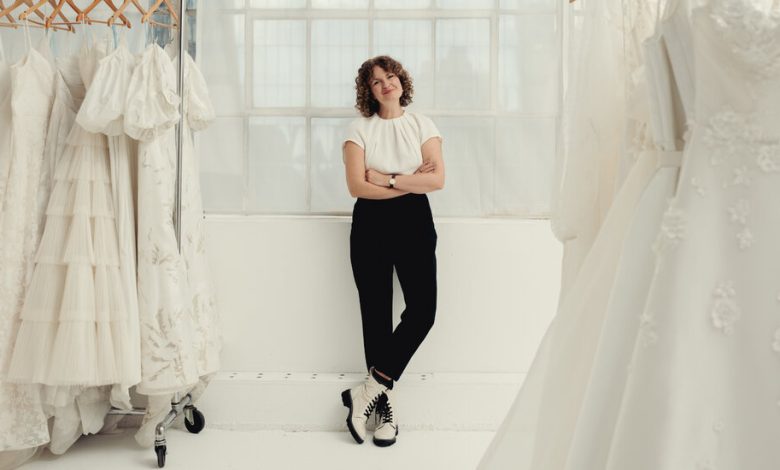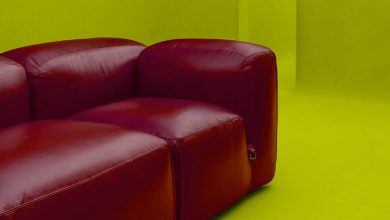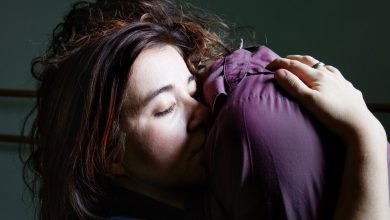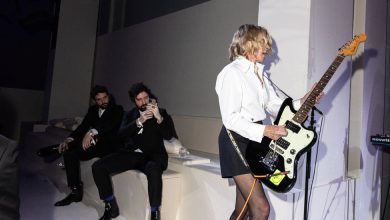From Sketch to Runway, the Making of a Bridal Collection

For the last decade or so, the designer Rebecca Schoneveld, who plans to relocate her to studio to Pleasantville, N.Y. next month, has participated in more than a dozen bridal fashion shows, sometimes presenting twice in one year. Although her designs change with each season, her process remains the same.
“I start with the fabric, that’s most important,” said Ms. Schoneveld, 40, who usually begins working on her collection around six months before the presentation. “It’s the visual and textural foundation.”
This year, Ms. Schoneveld presented her spring 2024 line at New York Bridal Fashion Week, which took place Oct. 10-12. She debuted her designs at the Horizon Bridal Showcase, a white-box space near Hudson Yards in Manhattan that some bridal designers have used to showcase their newest collections.
To get an insider’s feel for what goes into presenting a collection, I followed Ms. Schoneveld’s journey to creating her line, from conception to completion — and every step in between. Here is an edited and condensed summary, in Ms. Schoneveld’s own words, about how the collection took shape.
The Concept
For this collection, I was drawn to subtly intricate designs that were clean and airy. Two story lines emerged. One was almost translucent, and romantically textured with shapes that were a nod to midcentury American fashion. This includedlots of 3-D florals, corsets with full skirts à la Dior’s “new look,” crisply tailored garments worn with gloves, and the perfect sunglasses.
The other story spoke to a sensual, Old Hollywood red carpet moment. There are bias-cut Italian crepe-satin gowns, styled with fluid capes; hand-beaded featherweight sheath dresses; and pieces with whimsical embroidery reminiscent of a stained-glass butterfly wing.
The Starting Point
All year, I research and collect fabrics and construction details and silhouette ideas. But my real start is in January at the Première Vision New York textile show, because they are two years ahead of the market. I’m looking for standouts, themes, and what’s trending. For example, I fell in love with a Chantilly-style lace made of hand-pressed satin daisies from a Dutch textile design house that became the anchor point for my collection. I ordered 10 yards of eight different fabrics and waited two months for them to arrive from the mills.
Arrivals
Fabrics arrive by March or April. I spend time connecting with them to see how pliable and fluid they are, how the light shines through them and how they move with your body. Brides want to look fresh, but not too weird. They want beautiful and interesting. I make a list of fabrics I feel strongly about. Then, in an old-fashioned sketchbook, I draft a grid of minuscule rough sketches.
The Design Process
From May to June, the collection goes from visuals on paper to sample dresses. During this time, I’ll make up to 35 dresses in my studio to consider. I start with a sketch, then make a flat pattern, tailor the mock-up, do a round of fittings, and then cut the piece out of the true fabric, which turns into the dress. During several revisions, my tailor and I adjust details like the boning placement and skirt construction.
Prototypes
By mid-July, I’ve completed half of my prototypes. The other dresses arrive from factories overseas that I’ve sent designs to. This is the point where I start to see the whole picture come together. I physically try on everything to see how it looks and feels. I also use models. If it needs tweaking, we do alterations — lowering a waist seam or adjusting a neckline shape.
Visual Storytelling
At this point, I have racks filled with gowns that are mostly done. I start to see what’s working and what’s not. This collection specifically speaks to my sense of beauty and strength. I’m making wearable art that others will put on their bodies and celebrate life in, so I need to make sure each piece is successful on its own but doesn’t rob attention from another dress. They need to be cohesive. The dresses go on models; I take photos and scrutinize every design detail. Some pieces I don’t love as much; others are wonderful but don’t fit the collection. Those get moved to the back room for future contemplation. Winning pieces get a last round of alterations and styling adjustments.
Hard Edits
By mid-September, I’ve narrowed 35 pieces down to 20. Then I name each dress. They all have a personality, and it’s an emotional choice for a bride to choose. Naming it gives the dress more life. “Vaughn” is far easier to love and wear than, say, “Style 103.” With these designs, I’m helping people feel seen and celebrated, which is a very special thing to do.
Organization
Preparation for the bridal market begins a week later. I start styling — pairing gowns with veils, capes and shoes. I make a shot list of every look for the photographer. Casting for models happens; hair and makeup stylists are hired. This year, we did a two-day video and photo shoot, as I want to capture multiple sizes on different models.
Final Steps
The pieces are now completed. An empowered, sensual, evocative and artistic experience has evolved during this process. I really care about representing women the fashion world has traditionally ignored. I had two models at the show, a size 10 and 20. Over those three days of the show, influencers, editors, buyers from stores and other designers saw my collection. As exhausting as it was, and although the work often feels solitary, when I do a show like this with other designers, new and old, I leave feeling inspired for the next round.



